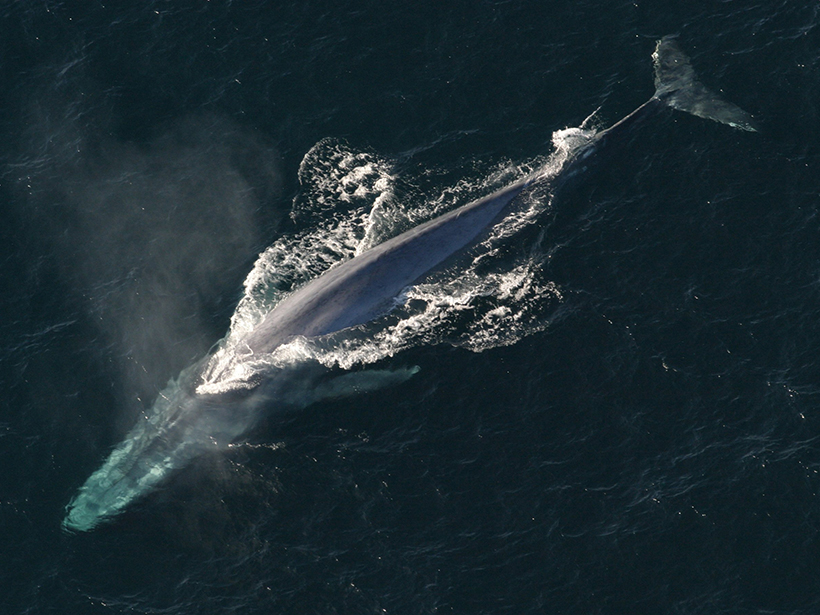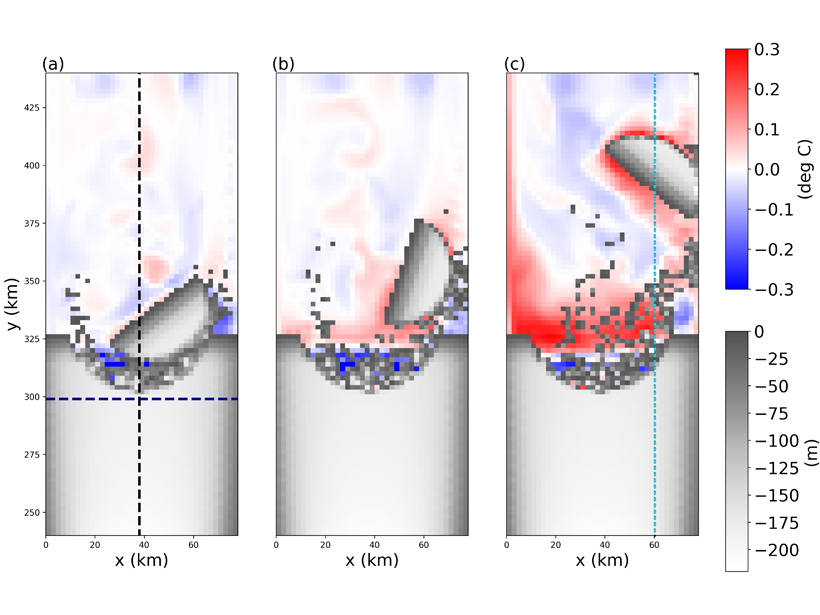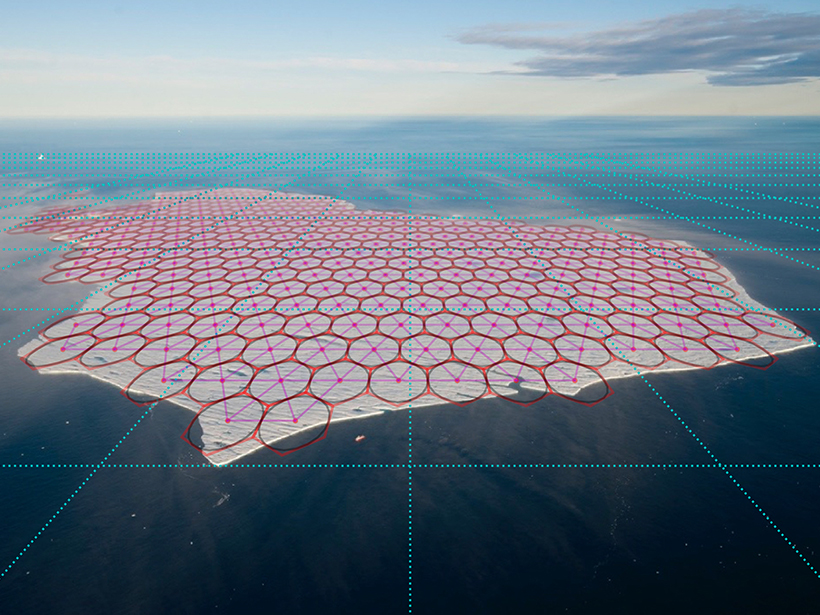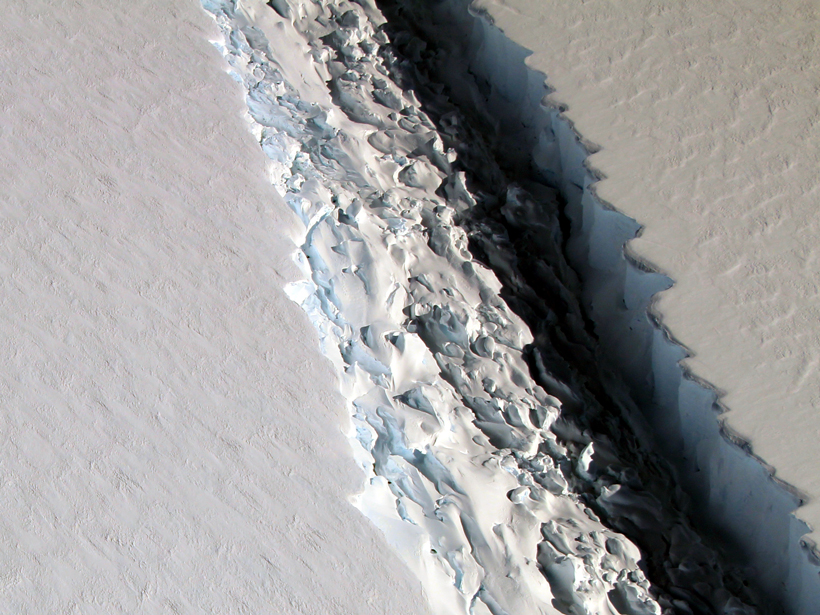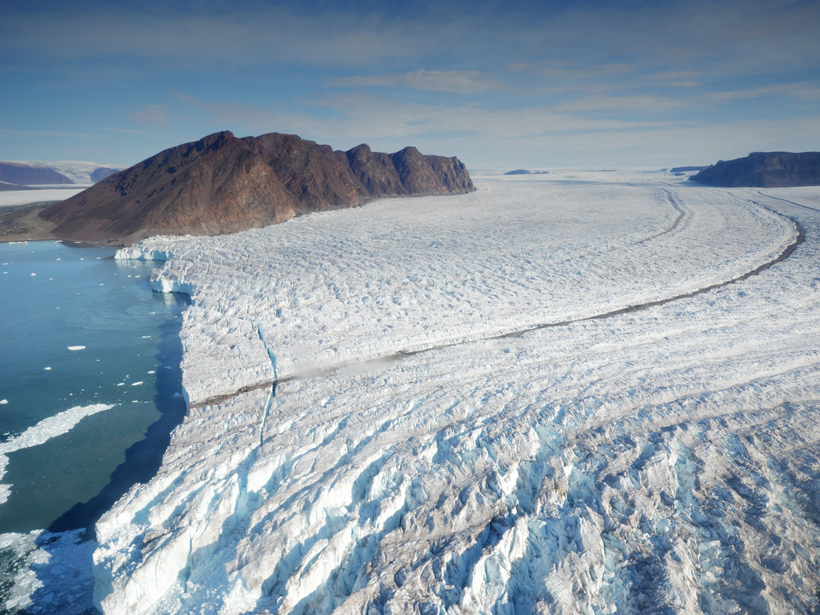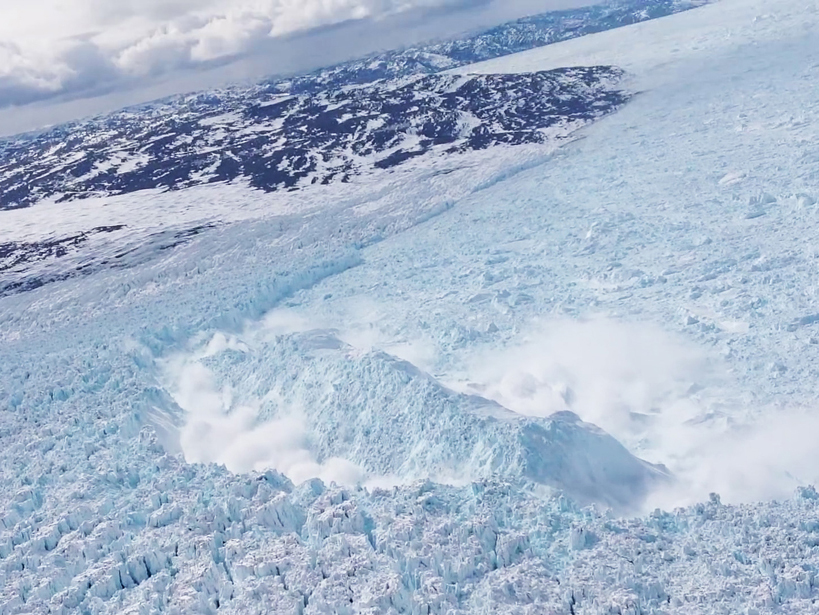Six years of acoustic recordings detect seasonal shifts in blue whale vocalizations that correlate with the presence of icebergs, a primary source of ambient ocean noise in the southern Indian Ocean.
Icebergs
Creating Icebergs in Ocean Models Coupled to Ice Shelves
Modeling icebergs as Lagrangian elements held together by numerical bonds provides insights into coupled exchanges of heat, freshwater, and momentum between large icebergs and the ocean.
The Ice Nurseries of the Arctic Are Melting
Ice formed in coastal nurseries along Russia’s Arctic coast is melting before it can float far offshore. Scientists are worried about what that means for wildlife.
Icebergs Reveal Contours of the Ocean Bottom
Using satellite imagery of grounded icebergs near Greenland, researchers estimate the drafts of these ice masses and therefore water depth, measurements that shed light on future sea level rise.
Scraping Bottom: Iceberg Scours Reveal North Atlantic Currents
A 3-D seismic analysis of Pleistocene iceberg gouges indicates that surface currents in the Norwegian Sea flowed northward and remained consistent during numerous glacial cycles.
How to Find an Iceberg’s Breaking Point
Researchers develop a mathematical method of modeling tabular icebergs, like the one that broke away from an Antarctic ice shelf earlier this year.
Six Points of Perspective on Larsen C’s Huge New Iceberg
A Delaware-sized slab of ice just broke off Antarctica. Now what?
New Technique Reveals Iceberg Calving Process
Researchers used unmanned aerial vehicle data to model the growth of a fracture that broke a 1-kilometer-long iceberg off a Greenland glacier.
Iceberg Surge During Last Deglaciation May Have Had Two Pulses
Seafloor sediment cores provide new clues that could help clarify the influence of ice sheet collapse on a period of ocean cooling marked by slowed deepwater circulation.
Seismic Clues Reveal the Mechanisms Behind Iceberg Calving
Scientists combine models and video footage of iceberg calving to analyze the potential of seismology to unravel physical processes behind the breakup of ice sheets.

